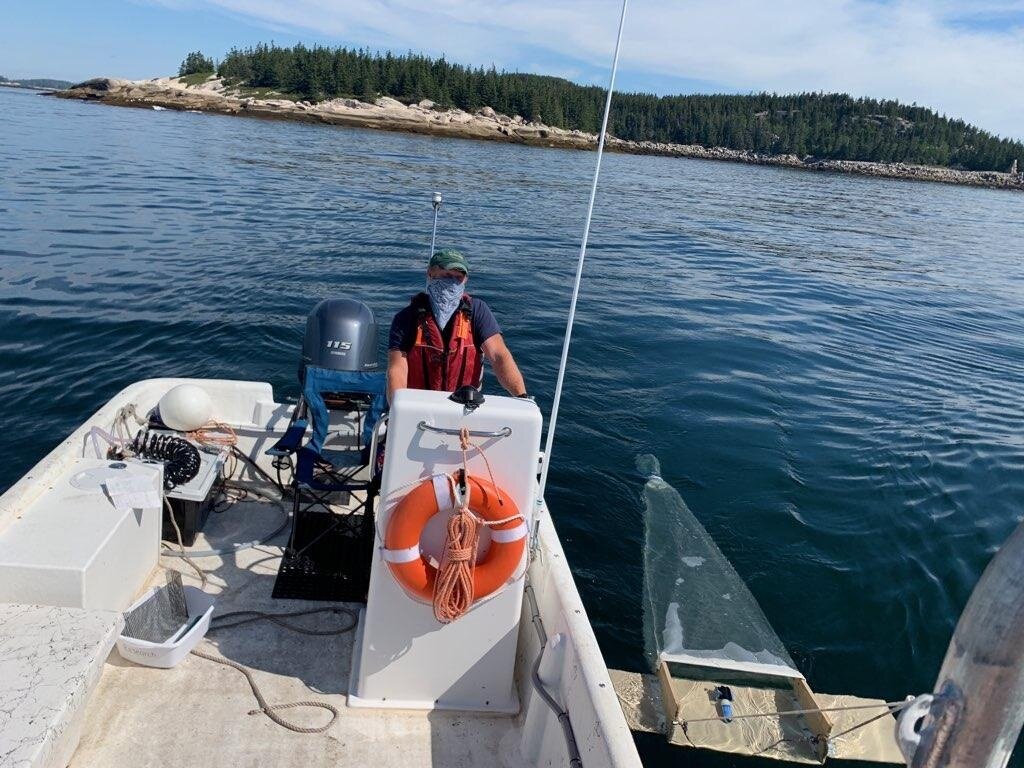Stage III Larval Lobster caught 6/23/20
Blog Post by Carl Huntsberger, Research Assistant
This summer HICSL joined the search for baby lobsters! In the Gulf of Maine lobsters are more plentiful than ever before supporting the most profitable single species fishery in North America. However, the ALSI survey, a long-term data series searching coastal nursery grounds for lobsters, has seen a downturn of juvenile lobsters in recent year. This has sparked more interest in improving our understanding of the dynamics involved in the early life stages of the lobsters. Research lead by the Wahle lab at the University of Maine has been investigating the dynamics between food sources and the different stages of larval lobsters. Preliminary work has shown that the numbers of stage I-III larvae lobsters have been increasing with the number of spawning females but the number of lobsters making it to stage IV may be limited by food.
Stage IV Larval Lobster caught 6/23/20
A single female will release 10-100,000 larvae in the early summer. These larval lobsters live as plankton in the water column for between 3 and 10 weeks. Initially these lobsters are approximately 8mm long and appear more shrimp-like for the first three molts. They then transition to look more like adult lobsters with the fourth molt or the post-larvae stage. These post-larvae are drawn towards light staying near the surface of the water. This behavior allows us to target this stage by using a neuston net, skimming just below the surface. We have conducted biweekly sampling with three 30-minute tows just south of Hurricane Island since the end of June and finally saw our first two larval lobsters last week!
Carl conducting the neuston tow
This data collected at our site will be shared with the Maine Department of Marine Resources which will be combined with their data of the neuston tows they’re conducting, enabling a more complete understanding of the larval dynamics. The big questions being focused on are the timing of larval development, where the larvae are, and identifying any bottlenecks to survival.
As a final somber note, when I am out conducing these tows I have been seeing and collecting a lot of plastic debris. This does serve as a good reminder to me to reduce, reuse and recycle and if plastic must be used to make sure it is deposed of safely.



